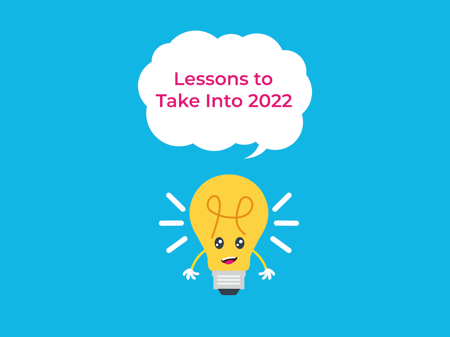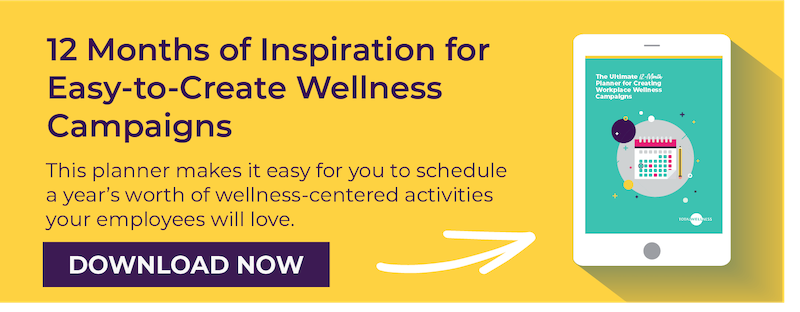 We all know the post-pandemic workplace looks different.
We all know the post-pandemic workplace looks different.
It’s created an opportunity for open dialogue between employee and employer on what the ideal work situation feels and looks like.
When the pandemic took over our lives and the workplace in March 2020, it created a disruption. But there’s something to be learned from difficulties and that’s how to be better. Now, almost two years in, there are some valuable lessons to move forth with, especially when it comes to workplace wellness.
Here’s a look at the valuable lessons worth remembering in the post-pandemic workplace.
Flexibility in Work Practices is Key
In preparing for the unknown, being flexible is a key part of the equation, too. For employers who didn’t understand the importance of offering flexible scheduling and/or work-from-home options, it impacted their business operations in a big way. In fact, one in four workers quit working this year. To keep on thriving, businesses are realizing how far remote work and flexibility will go. IDC Enterprise Applications Future Enterprise Resiliency & Spending Survey, found 49% of organizations expect remote work will now simply be a part of their work practices.
Remote Work Does Work
For employers who may have doubted the efficacy of remote work, the pandemic may have proven to them otherwise. Studies back it up, too. One analysis done by the McKinsey Global Institute of 2,000 tasks, 800 jobs, and nine different countries found,
“More than 20 percent of the workforce could work remotely three to five days a week as effectively as they could if working from an office.”
Changing Minds is Still Tough
Try having a discussion these days about the vaccine, herd immunity, social distancing, or any number of pandemic-related topics and you’re bound to get very strong responses. As it turns out, people will believe what they believe. The longer we hold onto a belief, the more likely we are to see messages geared toward that (think of social media and how many targeted ads you get!). The more one consumes in a certain arena, the further validation they may find thanks to algorithms, social circles, and more.
That’s why positive messaging and providing research-backed content in the workplace when it comes to vaccines, COVID protocols, and more is so important and essential.
Mental Health Needs Attention in Post-Pandemic Workplace
As the pandemic wore on, mental health concerns took the spotlight more than once. One study by the Queensland Center for Mental Health Research, School of Public Health at the University of Queensland found anxiety and depression cases rose more than a quarter during the first part of the pandemic. Women were one of the hardest hit with 52 million new cases attributed to them dealing with new mental health woes. Fear of infection, loneliness, physical health issues, and isolation all played a role — and continue to play a role — in pandemic-related mental health issues.
Work Conditions Must Improve
The COVID-19 pandemic brought to light the unequal distribution of workplace health risks among workers of different races, jobs, and earning levels. Immigrants, in particular, lost jobs at a high rate during the peak of the pandemic. Some were forced to take work for less pay as well to make ends meet. On the essential worker front, 50 million Americans are considered both frontline and essential workers, meaning working from home isn’t an option. They were at heightened risk for catching COVID because they weren’t able to socially distance and Personal Protective Equipment (PPE) shortages also made it difficult to stay safe while working. How can you improve conditions in your own workplace? Make a list to start considering.
Activity is Still a Must
If there’s one other major health lesson the pandemic taught everyone, it’s that pandemic pounds add up fast. But for those who kept up with their workouts, it kept them mentally healthier as well. One study showed exercise outside reduced anxiety and depression during lockdown periods. If there’s anything we can take from lockdowns, it’s that humans are meant to be outdoors and should move their bodies daily.
Empathy Goes a Long Way
With more mental health issues on the rise and burnout becoming more common, workplace cultures have embraced the idea of empathy more. Not only does empathy create a supportive environment, but it also further engages employees. The Center for Creative Leadership also reports empathy in the workplace positively impacts job performance, too. Look for ways to be more empathetic to employees and opportunities to cultivate compassion in the workplace to keep your team happy and healthy.
The Post-Pandemic Workplace Continues to Evolve
If the pandemic has taught us anything, it’s that remote work is possible, mental health resources are essential, and that work-life balance has never been more important.
While many experts agree the pandemic is wearing on, many call this the post-pandemic phase. Life is getting back to normal, but it’s not fully normal in the workplace. As you move into the new year, remember 2022 will bring new opportunities to work with your team and make the experience overall better thanks to the pandemic lessons learned.
Consider implementing changes like:
- Mentoring and coaching - Keep your newer employees engaged with seasoned employees by creating a cohesive program that allows for social connection.
- Exclusive mental health resources - Look into the cost of hiring a company counselor or at least offering healthcare benefits that cover mental health visits.
- Look at working conditions - Seriously look into the work setting. How many hours are employees logging? Are they taking breaks? Do they use their sick days? Are certain departments burning out faster than others? Look into it, watch who is exiting, and take note and make changes.
- Be flexible - Above all, keep flexibility in your back pocket. As the Omicron variant starts to spread, it’s still unknown how it will impact the world on various levels. Keep thinking about ways to improve the remote work experience while also keeping productivity up and safety protocols in check.
As an employer, learning to roll with the punches via flexibility, empathy, and understanding can make your post-pandemic workplace more welcoming to be a part of. The work landscape changed forever thanks to the pandemic and so has the lens through which employees view work, which is why listening to (and implementing) employee requests in this new work world is one way to keep them loyal.
How will your employees think of your company culture and leadership once the pandemic is fully in the rearview mirror? How do you want them to think of you? Consider the ways you’ll continue to navigate the ways the workplace has fundamentally changed since 2020 and move forward in the way that best works for your company’s core beliefs, values, and mission and you’ll never go wrong.
Is your team feeling fried, frayed, and frazzled? Check out our Stress Management in the Workplace guide for tips and advice on how to help your team feel a bit less overwhelmed.



